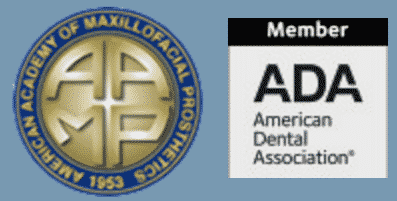Need Quality Partial & Full Dentures Richmond VA Specialist?
What are dentures? Dentures are ‘false teeth’ and are prosthetic devices used to replace missing teeth. Two types of dentures are available — complete and partial dentures. Complete dentures are used when all the teeth are missing, while partial dentures are used when some natural teeth remain. Dentures have many benefits. They provide a naturally fuller appearance to the face and support lips and cheeks. Dentures allow one to chew efficiently and accurately pronounce words. They often provide additional indirect benefits such as improved self-esteem and social interaction.
Complete dentures
Complete dentures can be either ‘conventional’ or ‘immediate’. Immediate dentures are delivered immediately after the teeth have been removed and the gum tissue will heal under it. The work for a conventional denture is started in the mouth about eight to 12 weeks after the teeth have been removed. Immediate dentures are made in advance and can be positioned as soon as the teeth have been extracted. As a result, the wearer does not have to be without teeth during the healing period. However, bones and gums shrink over time, especially during the healing period following tooth removal.
Disadvantages of immediate vs conventional dentures
Therefore, a disadvantage of immediate dentures in comparison to conventional dentures is that they require more adjustments and relines to fit properly during the healing process. Generally, immediate dentures should only be considered a temporary solution until conventional dentures can be made.
What is a complete denture?
A complete denture is a prosthesis that includes all teeth for the upper and/or lower arch. An upper denture can be manufactured so that it will remain in place with a slight suction to the upper arch. A lower denture is more difficult to hold in place as a reliable suction cannot be achieved.
What are snap into place dentures?
A common method to add stability to the lower arch is to place two implants in the front of the lower arch for support. A 2-implant over-denture can be snapped into place by the patient and should be removed for cleaning. It is regarded as a standard of care by the American Dental Association.
What are Removable Partial Dentures (RPD)?
Removable partial dentures are as common as complete dentures and cover the replacement of some teeth. Removable partial dentures (RPDs) are held in place with retentive clasps on the remaining teeth and should be removed for cleaning. Often the surface of adjacent/ abutment teeth will be slightly modified to enhance and anchor the clasp mechanism of the RPD. The edentulous spaces will be filled with denture teeth matching the shape and shade of the remaining teeth.
Flexible partial dentures utilize flexible materials to anchor teeth, often on surrounding adjacent teeth, for added support. They are advertised as being more esthetic with gum-colored plastic clasps instead of metal clasps. They lack the firm adjustable clasps of RPDs and are generally regarded as non-permanent prostheses.
A removable partial denture should fit snugly, tight, firmly, and evenly rest in the remaining teeth and soft tissue whereas a flexible partial will reduce bone structure much faster due to its uneven pressure points on the underlying bone. If flexible partial dentures are utilized –- this should only be in a situation requiring a temporary prosthesis.
Partial denture before and after
What are Hybrid dentures?
A complete set of high-quality upper or lower prosthetic teeth can be immediately fixed on a minimum of four or more dental implants that have been securely anchored in the jaw. This is what is known as a fixed hybrid restoration or fixed hybrid denture, and it is recommended for those who have lost or are about to lose all of their upper or lower teeth. As in the case of a complete denture, the hybrid restoration supplies both new prosthetic teeth and gum tissue. This procedure provides a permanent functional dental restoration with unsurpassed esthetics, resulting in a dramatic quality of life improvement for patients.
The specialized implants are designed for immediate function and typically eliminate the need for bone grafting should sufficient bone be available. Because the fixed hybrid restoration does not cover the palate of the mouth, patients are better able to enjoy the taste and temperature of foods. Especially those patients who are prone to gagging with a complete upper denture will find great relief with a palate-free restoration.
If a patient still has a few of his/her natural teeth, they will be removed in the same surgery as the placement of the implants. On the same day, the new “fixed” restoration will be secured on the implants. The entire process, including any necessary extractions, can be completed in one day, typically using I.V. sedation, with minimal recovery time.
Patients receive a provisional fixed hybrid dental restoration on the day of surgery, and this provisional restoration is replaced by a permanent restoration approximately three months later. During the time the provisional is worn, the function and appearance of the restoration are observed and fine-tuned so that when the permanent restoration is fixed on the implants, it meets all expectations for best function and esthetics. However, this procedure requires ideal bone amount and patients’ general health.
The immediate delivery of an implant-supported hybrid restoration is an advanced procedure that is typically performed by a qualified interdisciplinary team, including an Implant Surgeon, a Prosthodontist, and Dental Technician. The procedure is variously referred to as “all-on-four dental implants,” “all-on-four dentures,” “one-day teeth replacement,” and often in dental marketing as “same day smile” or “smile in a day.”
The only disadvantage with the all-on-four approach is, that if one implant does not osseointegrate (grow into the bone), and this case is on hold, as on 3 implants it would be overloaded. This risk can be mitigated by placing more than the minimum number of implants per arch.
Dentures Q&A
Does insurance cover the cost of dentures?
Most dental insurance providers cover some but rarely all of the cost of dentures. However, with an insurance pre-approval form filed by Advanced Dentistry of Richmond, it is easy to determine the specifics of what your policy will cover.
How are dentures made?
The denture development process will take a few weeks and several appointments. Once Dr. Klostermyer determines what type of appliance is best for you, the general steps are:
- A series of impressions of your edentulous arches have to be taken. Measurements of the relationship of your arches and how much space is between them have to be analyzed. High-quality denture teeth matching each patient facial features will be chosen from a variety of choices/forms/shades/shapes.
- Models in plaster are fabricated. A wax form, and/or acrylic patterns in the exact shape and position of the denture are made. This model denture will be tried in the mouth during the wax stage and will be assessed for color, shape, function (speech), and fit before the final dentures are manufactured.
- This manufacturing of a final denture will be performed by a dental laboratory.
- Adjustments will be made on the day of delivery of the denture and at the following appointments as necessary.
How do new dentures feel?
Until the muscles of the cheeks and tongue learn to keep new dentures in place they may feel a little odd or loose for a few weeks to the wearer and during that time he/she becomes more comfortable inserting and removing them. Also, it is not unusual for minor irritation or soreness to occur and for saliva flow to increase during the period of adaptation, but these problems will diminish as the mouth adjusts.
Will wearing dentures make a person look different?
Usually, there is quite a change in the appearance of an edentulous person wearing a denture as opposed to not wearing one. Teeth play a key role in supporting the facial structure. A lack of teeth lets the facial structures around the lips and cheeks collapse. Dentures should be made to closely resemble natural teeth thus minimizing a change in facial appearance. In fact, dentures will improve your smile and enhance your facial features.
Will eating be difficult with new dentures?
Eating with new dentures will take a little practice and may be uncomfortable for some wearers for a few weeks. To get used to the new denture, it is recommended to start with soft foods cut into small pieces. Chew slowly using both sides of the mouth. As one gets used to new dentures, other foods can be added until a normal diet is achieved. Caution should be taken with hot or hard foods, sharp-edged items such as shells as well as small seeds. Foods that are extremely sticky or hard should be avoided. Chewing gum is not recommended for denture wearers.
Will dentures change your speech?
It might be difficult to pronounce certain words in the beginning. It might be helpful to practice by saying the difficult words out loud. With time and practice, one will become accustomed to speaking properly with dentures.
Dentures should not “click” while talking; if so – they will need adjustment. Dentures may occasionally slip when you laugh, cough, or smile. Reposition the dentures by gently biting down and swallowing.
Should dentures be worn 24 hours a day?
During the first several days after receiving your denture, a patient may be asked to wear it all the time, including during sleep. Although this may lead to temporary discomfort, it is the quickest way to identify the areas on the denture that may need adjustment. Once adjustments are made, one should remove the dentures before going to bed. This allows the gum tissues to recover and receive normal stimulation and allows cleansing by the tongue and saliva. The denture can be used again in the morning.
Should the use of a denture adhesive be considered?
One may use denture adhesive:
- To enhance satisfaction with a properly constructed denture. Adhesives enhance retention, stability, bite force, and an individual’s sense of security.
- To assist individuals with dry mouth conditions that lessen denture adherence, such as individuals having undergone radiation treatment, taking certain medications, those with neurologic disabilities including strokes, and the elderly.
- To provide added stability and security for those who place unusual demands on facial muscles, such as public speakers or musicians.
When shouldn’t adhesives be considered?
There are situations when denture adhesives should not be used. Those cases include:
- When it is used as a “fix” for ill-fitting or poorly constructed dentures. If dentures begin to feel loose, are uncomfortable, or cause sores to develop, they should be professionally adjusted.
- When the dentures have not been evaluated for a long time. Dentures rest on gum tissue and the jawbone, which shrink and deteriorate, respectively, over time. Therefore, the real problem might be a need for a denture adjustment or new dentures.
- When oral hygiene practices cannot be sustained.
- When adhesives have been used for a long time, especially when visits to the dentist are infrequent, and when the frequency and volume of the adhesive use increases. These developments may indicate the need for a denture adjustment or new dentures.
- When any known allergy exists to the adhesive’s ingredients.
How are denture adhesives applied?
- The minimum amount necessary is being used to provide the maximum benefit. An application of a small amount should be started with, and then gradually increase the amount until one feels comfortable.
- The adhesive should be applied thinly and evenly on the tissue-bearing surface of the denture.
- It could be applied or reapplied during the day to provide the desired effect.
- The dentures should be always thoroughly cleaned before application.
- And again: adhesives work best with a well-fitting denture.
What are the types of denture adhesives?
Paste application: A small amount is applied to a dry or preferably wet denture. Placement of adhesive close to the denture borders should be avoided. If the adhesive oozes out, less of the product should be used.
Powder application: A thin, uniform layer throughout the tissue-bearing surface of the denture should be sprinkled on it. Excess powder needs to be shaken off and then the denture gets pressed into place.
Are denture adhesives safe?
Dental adhesives are safe as long as they are used as directed. With well-fitting dentures the adhesive is only used to provide added stability, there should be no ill effects. If adhesives are used excessively to fill voids for an ill-fitting denture, they can be harmful to the underlying soft and hard tissues. Occasionally, in these cases, inflammation of the soft tissues can result. In addition, because of its movement on the soft tissue and underlying bone, an ill-fitting denture can cause bone loss. As a result ill-fitting dentures often crack, fracture, and break.
How do I care at home care for my dentures?
Dentures should be cleaned regularly after eating. Dentures should be cleaned in a solution with a denture-cleaning tablet nightly. DO NOT brush your dentures with toothpaste as it is too abrasive. Although denture patients no longer have their natural teeth, they should see the dentist regularly to check the gum tissues and to ensure proper denture fit.








